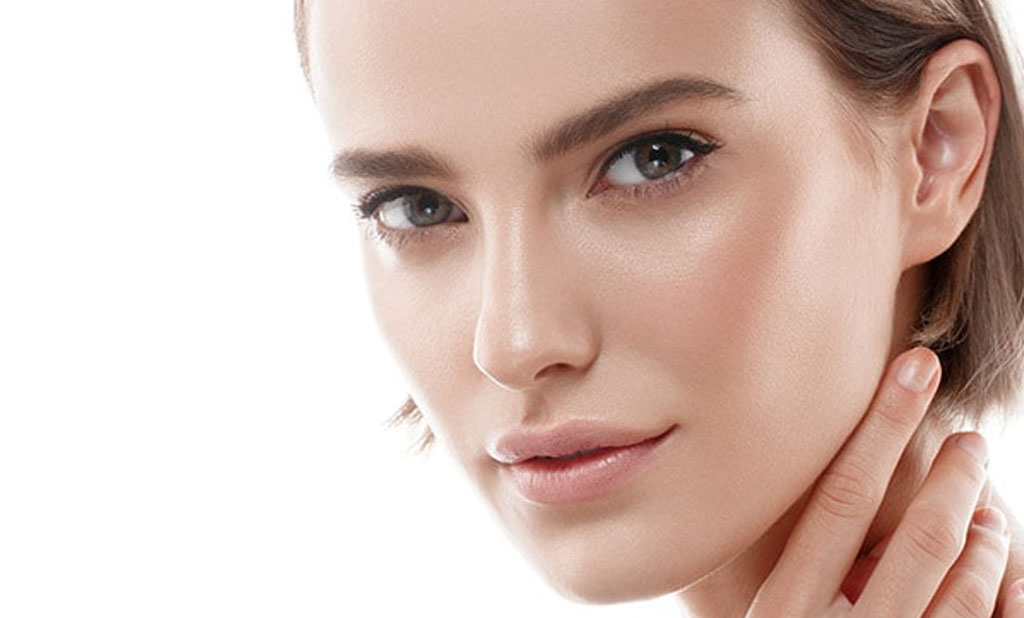Our skin is a miracle of nature, capable of renewing itself even into old age. However, over the course of time it becomes more and more difficult to do so. The ability to repair itself decreases. With fractional lasers, aesthetic medicine offers various ways to help the skin regenerate to varying degrees. We reveal how these laser treatments work and what “Fractional Laser Technology” can do in this blog post.
Appeal to the skin’s self-healing ability
Fractional lasers are currently among the most advanced methods of skin treatment. Fractional means that the energy is not applied to the entire skin surface, but only selectively. As a result, small islands of undamaged skin “remain” between the treated areas. Therefore, a faster regeneration is made possible. In principle, a distinction can be made between ablative and non-ablative laser treatments.
In the case of ablative laser procedures, the superficial skin layers are ablated, depending on the existing wrinkle depth or sun damage. This creates a minimal wound that initiates a process that stimulates the production of collagen and new elastic fibers. This development results in significant wrinkle reduction and skin tightening. The procedure is suitable for treating mild to deeper wrinkles, mild to moderate tissue sagging, and acne scars. Since the superficial layer of skin is removed, any pigmentary shifts, such as age spots, are also removed. One treatment is usually sufficient, but for deeper wrinkles or acne scars, two to three treatments may be necessary at intervals of a few months. Patients should expect downtime of a few days to a week with the ablative laser procedure, depending on the depth of ablation.
In non-ablative laser procedures, the skin surface remains intact, i.e., there is no ablation of the skin. Here, the laser beams penetrate the epidermis (uppermost layer of skin) without damaging it and reach the dermis, the so-called dermis. This layer of skin consists mainly of connective tissue fibers. Therefore, no obvious “wounds” are visible after the treatment. The patient can immediately return to his normal daily routine. The laser treatment creates individual pinprick-like micro-injuries under the skin. The surrounding tissue is stimulated to heal the mini-injuries. New cells are formed and, as a result, fresh collagen. The destroyed cells are removed. This procedure is suitable for giving the skin a fresher appearance and the so-called glow, reducing fine superficial wrinkles and pigments, and improving stretch marks and scars after surgery. Depending on the laser used and individual conditions, one should expect four to six treatments at intervals of two to four weeks.
In both procedures, the skin is stimulated to heal itself. The wound healing process, which leads to the formation of new firm and elastic connective tissue, takes place over several months. Therefore, a natural, continuous improvement of the skin’s appearance follows – even in the following months. The final result is a smoothed, tightened, refreshed, rejuvenated skin appearance.
Dr. Tatjana Pavicic
Dr. Tatjana Pavicic is a specialist in dermatology and venereology with her own practice in Munich. She is an internationally recognized expert in aesthetic dermatology with a special focus on dermocosmetics, botulinum toxin, fillers and lasers.
Versatile application
Classically, fractional laser technology is used to tighten aged skin, alleviate wrinkles, make (acne) scars or stretch marks invisible. The condition of large pores and pigment changes can also be specifically improved or even made invisible with Fractional Laser Technology.
Fractional laser munich
In our practice, we use various systems based on fractional laser technology:
Cds system lasemd®
Our CDS (Cosmeceutical Delivery System) system LASEMD®, a non-ablative laser procedure, uses a so-called thulium laser, which creates small invisible channels directly under the top layer of skin. The special feature of this system is that the laser is supported by highly purified and concentrated cosmeceuticals (lasemd ampoules) such as retinol, vitamin C or resveratrol, which have been specially developed for this procedure.
1540-nm-erbium-glass-laser
The so-called 1540-nm erbium glass laser is also a non-ablative laser. With the aid of various lenses, it can penetrate to a depth of approx. 1.9 mm. The heat applied in micro-columns stimulates the formation of new connective tissue fibers and hyaluronic acid. This is reflected in a slight to moderate tightening of tissue, smoothing of slight wrinkles, improvement of stretch marks and surgical or traumatic scars.
Co2 laser (eco)
The fractional CO2 laser (eCO) is used for so-called skin resurfacing. Here, by removing the superficial layers of skin and heating the surrounding tissue, a significant tightening is brought about. Furthermore, even deep wrinkles (e.g. around the mouth) are smoothed and acne scars are reduced.
Max-g
MAX-G is an ultra-modern and efficient flash lamp (IPL). With this we can effectively treat visible veins, e.g. couperose. The energy of the light is absorbed by the red blood pigment hemoglobin. As a result, the vessels collapse and are replaced by skin-colored connective tissue. The veins are now no longer visible. This procedure is also used to remove annoying age spots on the face, hands and also to rejuvenate the décolleté.
In all laser and IPL procedures, the treated skin is sensitive to light and UV. This means that it must be consistently protected by a high sun protection factor. Depending on the procedure, sunbathing should be completely avoided for several weeks.
Foto: © utkamandarinka / ID:121277930 / fotolia.com

